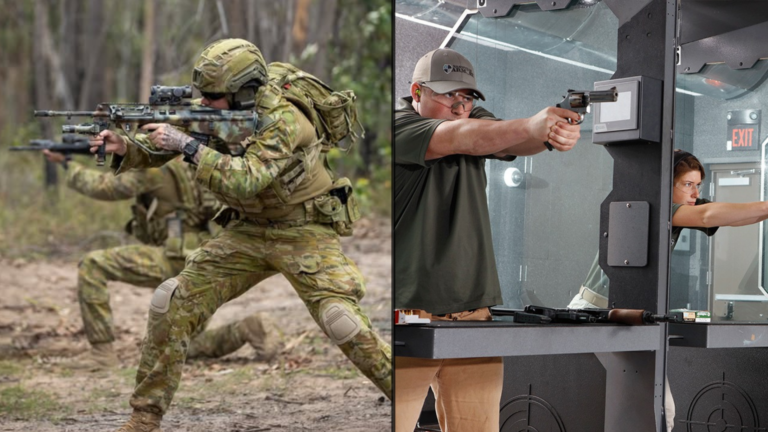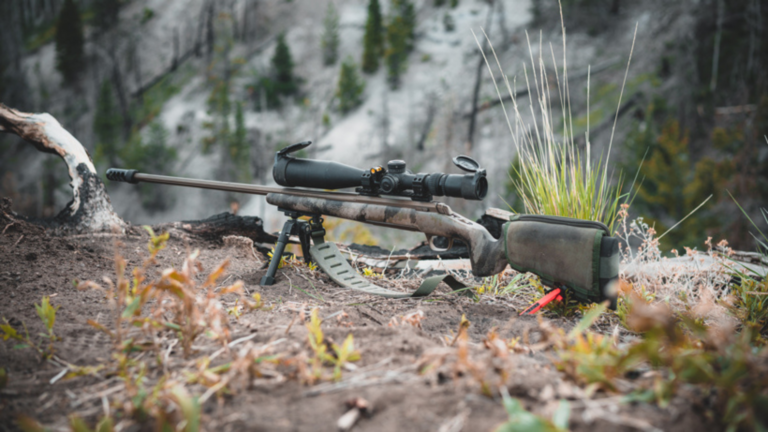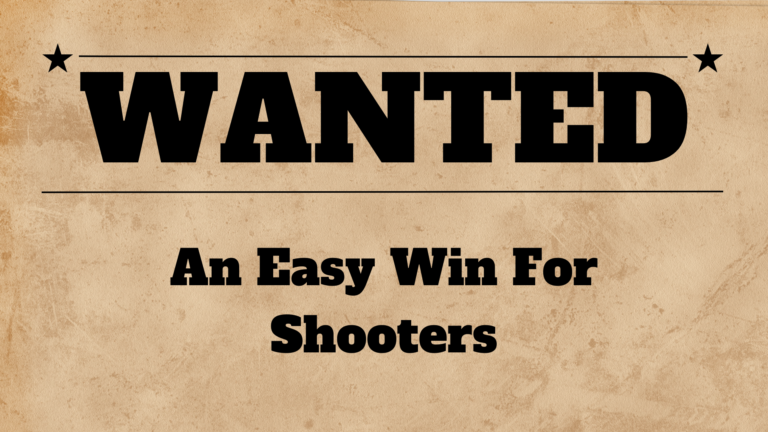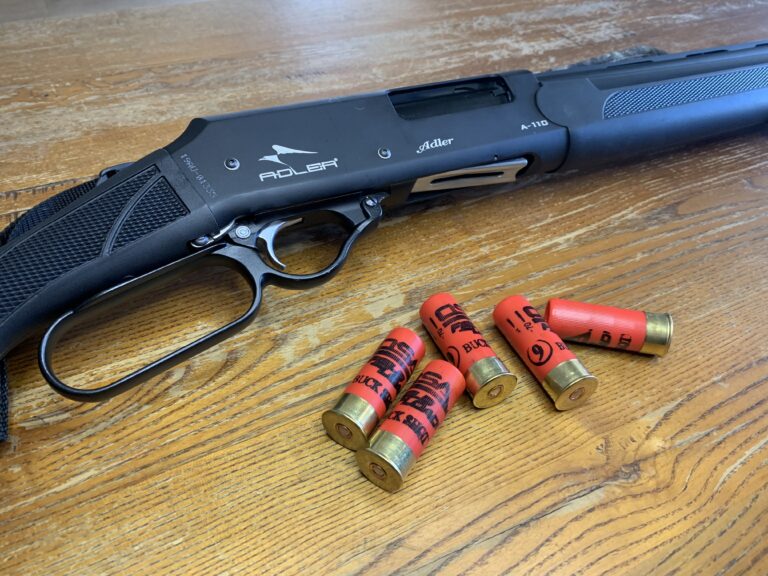Success is rarely a matter of luck – it often comes as a result of thorough preparation and planning. This guide will walk you through the process of planning your first hunt and highlights a number of external factors that will improve your likelihood of success.
Step 1. Choose a location
The importance of choosing the right location for a hunt cannot be overstated. As a new hunter, you’re already at a disadvantage in terms of skill and practical experience. Choosing an unproductive forest for your first outing will only make things more difficult. While a reasonable argument can be made about spending time in any state forest to develop field skills, such as identifying tracks, scat, and other signs of animal activity, your odds of successfully locating your target species will be minimal. That’s why I recommend that all new hunters should travel to known ‘hot spots’ for the game animals they wish to pursue. Doing so will increase your chance of encountering the target species, which in turn, will allow you to observe its behaviour and any sign that it leaves behind. At the very least, this will accelerate your learning process. At best, you may be lucky enough to harvest an animal. There are a number of useful resources to find productive hunting areas. Some of the more popular ones are listed below.
Disclaimer – While the following list includes a variety of government and non-government sources, it’s important to understand that the core information was sourced from recreational hunters. Some hunters may be honest with the information they share, others may not. Keep this in mind when conducting your research, and whenever possible, always try to verify information by cross-referencing it with multiple sources. Doing so will increase your chances of finding a productive hunting area.
State Government Hunting Departments
Each year, Victoria’s Game Management Authority publishes a list of the top hunting regions in the state, based on data collected from recreational hunting surveys. This data is categorised by specific hunting methods, i.e., hunting with hounds, and shared on their official Facebook page. If you’re planning a hunt in Victoria, this should be your first source of information. Once you’ve identified a region, you can then consult local hunting maps and other resources to narrow down your choice to a specific forest, or attempt seek out private property access in the surrounding area.
In NSW, the Department of Primary Industries Game Licensing Unit takes a different approach to collecting and sharing hunting information. All public land hunters are required to submit a “harvest return” after every hunt. A portion of this data is then made available to NSW Restricted (R) licence holders as a downloadable PDF through the Game Licensing Unit’s hunting portal. This data shows which species were harvested each month in each forest. The more months a species is listed as harvested, the more productive that forest is likely to be.
Third-party Organisations
Several third-party organisations provide free access to useful data on their websites and social media channels. A popular example is the Centre for Invasive Species Solutions, which offers the free Feral Scan app. This app allows the public to log details of feral animal sightings, including the date, time, location, and a description of what was observed. This data is then geotagged to a map of Australia and is accessible to all users, making it a valuable resource for identifying areas that are abundant with game animals.
Another notable source of information is Athena Spatial, an Australian business that offers high-quality mapping overlays for NSW state forest hunting areas. Each year, Athena Spatial reviews the NSW DPI’s hunting survey data and compiles it into lists of the top 10 hunting locations for deer, goat, pigs, and the overall top rated forests for all three species combined. This information is available through their Facebook page.
Hunting clubs
Your local hunting club can be another valuable source of information. However, it’s important to set realistic expectations by understanding what you’re likely to receive in exchange for your membership fees and what you may gain through active participation. With most hunting clubs, your paid membership will typically provide advice on hunting various species of game animals, along with guidance on safety, compliance, and environmental conservation. However, you’re unlikely to receive specific advice about hunting in your local forest as part of your membership. Why? Because many hunters spend years – if not decades – scouting their favourite hunting areas, and they’re often reluctant to share that knowledge and jeopardise future opportunities to support someone they don’t know. This is where active participation becomes important. As you build rapport with other members, they may be more willing to share personal insights. If you’re lucky, some may even offer you access to hunting opportunities on private land. The best way to reach this point is to volunteer your time and skills in the club, and portray yourself in a positive manner. Like most things in life, you get out what you put in. Your hunting club is no different.
Social media groups
My final suggestion for gathering location-specific data is social media. While this may be the easiest place to gather intel for an upcoming hunt, its by far the least reliable source of information. If you do intend to use it, skip asking questions and jump straight over to the groups search bar. Here you can type in any key words that might help you, such as the name of the forest that you’re interested in hunting. Chances are you’ll find a number of opinions on how productive that particular area is. Again, whether that information is accurate or not will always be debateable.
One advantage that social media has over the other options is that it allows you to gather secondary information that will improve your ability to navigate each forest. This may include recommendations on how to access the forest, feedback on the overall condition of the roads, suggestions on camp sites, and advice on where to find mobile phone reception. Unlike asking about the huntability of a forest, this secondary information tends be fairly reliable, and is incredibly useful when forming a plan for your hunt. If you’re desperate for more information, you can always post a question in the group. Though, be warned – Its likely to be met by the best and worst patrons of social media. Unfortunately, that’s the price we pay for unfettered access to strangers and their opinions…
Step 2. Lock in a date
After you’ve chosen a location, its time to set a date for the hunt. In some states, such as NSW, you will be required to manually register these dates in the state’s game hunting portal. In others, you are able to turn up whenever you’re ready and commence your hunt. No matter which option applies to you, its important to understand how the timeframe you’ve selected will impact your hunt. Some important factors to consider are –
Seasonal and atmospheric conditions
Simply put, these are the weather conditions you can expect to encounter during your hunt. This information will influence your equipment selection and may provide insights into animal movement and behaviour. Finding this data is as easy as conducting a quick Google search to review past weather conditions for the same month and comparing them with forecasts for your chosen time period. Once you’ve gathered this information, compare it with the previous research you’ve done on your target species to get a clearer picture of how these animals might behave during your hunt.
Tip: If you’re pursuing Sambar deer, check out the Secrets of the Sambar book series for insights into the species’ behaviour.
Biological factors
Aside from the weather, biological factors can also influence animal behaviour. In some cases, this creates an opportunity to capitalise on a lull in their alertness and natural defence mechanisms. The most well-known example of this is “the rut” or “the roar”, which typically occurs between March and May each year. During this time, deer become more active and less cautious due to fluctuations in their hormone levels. The purpose of this biological change is to encourage breeding. While the timing of the rut may differ by region, most hunters agree that it coincides with the first sustained cold weather shift marking the start of autumn.
Human activity
One of the more hotly debated factors that could impact the success of your hunt is the level of human activity in your chosen area. Some hunters argue that any human or mechanical noise will scare away game animals, while others insist it makes no difference – often pointing to video footage of curious deer lingering by the side of the road. Whether or not you think this is worth factoring into your plan is up to you. That said, you might want to consider booking your trip mid-week to avoid motorcyclists and off-road enthusiasts. In my experience, animals tend to be more relaxed and move more freely when there’s less disturbance.
Hunting pressure
Hunting pressure will be far more detrimental to your hunt than normal human activity. In short, it refers to the level of hunting activity in a given area and takes into account the behavioural impact on local wildlife. High levels of hunting pressure will reduce the population of the affected species, and make the remaining animals more evasive, often resulting in a shift from normal crepuscular activity (morning and afternoon) to nocturnal (night time). This creates an obvious issue on public land, as hunting with firearms or bows is generally confined to the period of 30 minutes before sunrise to 30 minutes after sunset. The key to overcoming hunting pressure is planning ahead. For example, if you intend to hunt during the rut, book your spot on the day the time slot first becomes available. Otherwise, you risk getting a less desirable booking or you might miss out altogether.
Step 3. Scout the forest
The next step in the planning process is to scout your forest. The aim of scouting is to get a better understanding of the local geography, animal activity, and to identify any points of interest that may be useful during your hunt. There are two ways to scout a forest, and each has their pro’s and con’s. Pre-scouting requires a hunter to visit the forest before their planned hunt in order to find and record useful information. This method will provide you with a greater understanding of the local area. However, it comes at a cost of time and effort. E-scouting makes use of online tools such as google earth, local hunting maps, and social media to scope out potential hunting sites and to gather intel from other hunters. While this method takes far less time and energy, the information collected will never be as useful or accurate as a pre-scouting trip. No matter which option you choose, its important to record your findings in some form of hunting journal, be it a notepad or the notes application in your phone.
Points of interest
As stated above, a point of interest is an area or geographical feature that will add some benefit your hunt. Your ability to identify these areas is what will set you apart from the average hunter, and in most cases, will mean the difference between success and failure in the field. Typically, they fall into 3 basic categories –
Hunt – Areas where game animals are likely to seek food, water, shelter, and includes any paths (game trails) they may travel on.
Navigation – Landmarks that will help you find your way around a forest. For instance; access roads, parking locations, campsites, and muster points (if hunting in a group).
Safety – Locations where you can seek help in the event of an emergency. These may include areas with mobile phone reception or nearby residents who could provide emergency medical assistance. Its also worth noting distinctive landmarks, such as lookouts or radio towers – that can be used as reference points to help guide emergency services to your location, should the need arise.
Important note: When scouting a forest, always mark these points of interest on your map as soon you discover them. Don’t rely on your memory to record them at a later date, as you may get the coordinates wrong or forget important details.
Step 4. Formulate a basic plan
Once you’ve gathered all the necessary information, it’s time to piece together your plan of action. To be clear, this “plan” isn’t something you need to follow to the letter. Think of it more as a quick reference guide to help minimize wasted time in the field.
Start by identifying your preferred hunting area within the forest and mark it on your map, along with any other points of interest (i.e., feeding areas or water sources). Depending on your hunting style, these markers can be used to create waypoints for a spot-and-stalk approach or as static locations for an ambush-style hunt.
Next, choose a parking location for your vehicle and find the access road(s) that connect to the main entry point of the forest. Mark these on your map as well. Avoid parking too close to your hunting area, as the noise and movement may spook your target species.
Repeat this process for multiple hunting areas.
Lastly, identify and mark 2–3 possible campsite locations on your map. With these steps complete, your hunting plan is now ready to go.
Why establish multiple locations?
Establishing multiple hunting areas will allow you to mitigate the risk of being caught off-guard due to unforeseen circumstances, such as road closures or forestry activities (i.e. general infrastructure maintenance or logging). It will also allow you to quickly switch between hunting areas if your initial location isn’t productive.
Identifying multiple campsite locations is also recommended, as your preferred location may already be occupied by other hunters. Should this occur, common courtesy dictates that you should give these hunters space and find another area to camp. After all, no one wants a stranger hanging around their campsite with a loaded firearm.
Develop your own map marking ‘key’
To simplify data recording, consider developing your own ‘key’ for the symbols and coloured ‘pins’ used when logging points of interest on your map. For example, if I were to use the free phone application Avenza Maps with the NSW Department of Primary Industries hunting map overlays, I would use the following colour codes and symbols:
Coloured pins
Blue – Water sources.
Green – Feed and bedding areas.
Orange – Animal sign, i.e., tracks and scat.
Red – Verified sightings of animals (not just noise or movement in the bush) and blood trails.
Yellow – A rough trail of checkpoints that I intend to follow when hunting a particular area.
Symbols
ATV- The current location of my vehicle.
Parking – Parking locations near each of my intended hunting areas.
Rangers hut (house with flag) – Camp sites.
POI (Asterix with arrow) – The approximate location where an animal was shot.
Exclamation mark – Danger, or an unexpected issue, i.e. A fallen tree across the road or a flooded area.
Washroom – Toilets.
WIFI – Mobile phone reception.
Note: Some mapping applications allow a description to be added for each pin or symbol. I recommend that you make use of this feature to log important information, such as the type of animal sign found and to number your designated hunting areas in order of priority, i.e., ‘hunt location 1’.
Physical maps
If using a hard copy of a map, coloured sticker tabs and marker pens can be used to log your points of interest. Your map should be kept inside a waterproof pouch to prevent information loss and deterioration of your map.
Step 5. Communication and Safety
Most people plan their hunt according to the weather and number of days in the field. Very few take the time to consider an emergency scenario, like a serious injury or medical episode. While having the right gear to recharge electronics and signal for help can reduce some risk, that gear can easily become damaged throughout a hunt. Unless you’re planning to crawl over a mountain to the CB radio in your car, you’ll need a back up plan to call for help. That’s where your close friends and family come in.
Before your hunt, I recommend sharing the basics of your plan with someone you trust. This should include the forest name, the number of days you’ll be out, your expected return time, and any planned check-ins. Sometimes I’ll take it a step further and send a screenshot of my hunting map with camp locations marked, or text GPS pins (via Google Maps) so it’s crystal clear where I am – or where I intend to be.
If I change my plan for any reason (i.e., move to another pre-booked forest or leave early), I always check in and keep the person updated. This proactive communication will ease their concerns and ensures that, if something goes wrong, someone will know to send help.
Final thoughts
Some new hunters shy away from planning – but the edge it gives you is hard to ignore. Over time, this process will build your “Hunt IQ” – the ability to understand how dates, seasons, weather conditions, and animal behaviour are all connected.
The more effort you put in, the more you get out. So stack the odds in your favour: do the groundwork, stick to your plan, and make it happen.
Related articles
Part 1 – Becoming a hunter – Coming soon.
Part 2 – Planning your first hunt.
Part 3 – Scouting a forest – Coming soon.
Part 4 – Preparing your equipment – Coming soon.
Part 5 – Hunter’s field manual – Coming soon.










